Stowe House: the Egyptian Hall
The Egyptian Hall at Stowe House was the first architectural project in England to register the impact of Baron Vivant Denon’s publication Voyages dans la Basse et la Haute Egypte (1802) which recorded in unprecedented detail and fidelity the ancient Egyptian antiquities that he visited when he accompanied Bonaparte’s military campaigns in the country. The room was formed in 1803 as the winter entrance to the house. It lies beneath the monumental North Hall (decorated in the eighteenth century by William Kent) and is reached by a curving, cobbled carriageway that dives beneath the steps of Vanburgh’s mighty portico. For his guests, the Ist Marquess of Buckingham, intended an experience akin to the discovery of an ancient tomb. Heat was provided by a sarcophagus/stove in the apse (reconstructed in wood by the architects, Purcell) while the battered walls and tunnel vault increase the sense of confinement. Crepuscular light admitted through the two windows from the carriageway is slightly augmented by an oil lamp magnified by a big lens set as a sun disc above the internal doors.
The paintings and stained glass which decorated the room were lost in the sale of 1921. So the project required a new version of the 1803 decoration devised by going back to the original source (the often minute engravings of Denon) and assembling imagery to fit the spaces. Two watercolours by Jean Claude Nattes and an early guidebook provided further guidance as did an initial research project on the sources by Hettie Dix of Purcell.
The wall panels were worked in the studio on canvas (supported by marine ply). The 20- foot ceiling canvas which represents part of a symbolic star chart in the hypostyle entrance hall of the temple of Hathor at Dendera (c.14-37 AD) was also executed in the studio and transferred on a drum for fixing ( by Richard Pelter of Fine Art Services) into its plaster frame. Cartoons, provided by the artist, for the stained glass panels (lit originally by borrowed light from adjacent rooms) were copied by Dan Humphries of Holy Well Glass with great accuracy and skill. The beaded plaster framing of the panels and the painting of the walls is the work of Fairhurst Ward Abbots.

The Egyptian Hall completed ( photograph by Will Pryce by kind permission of Country Life)
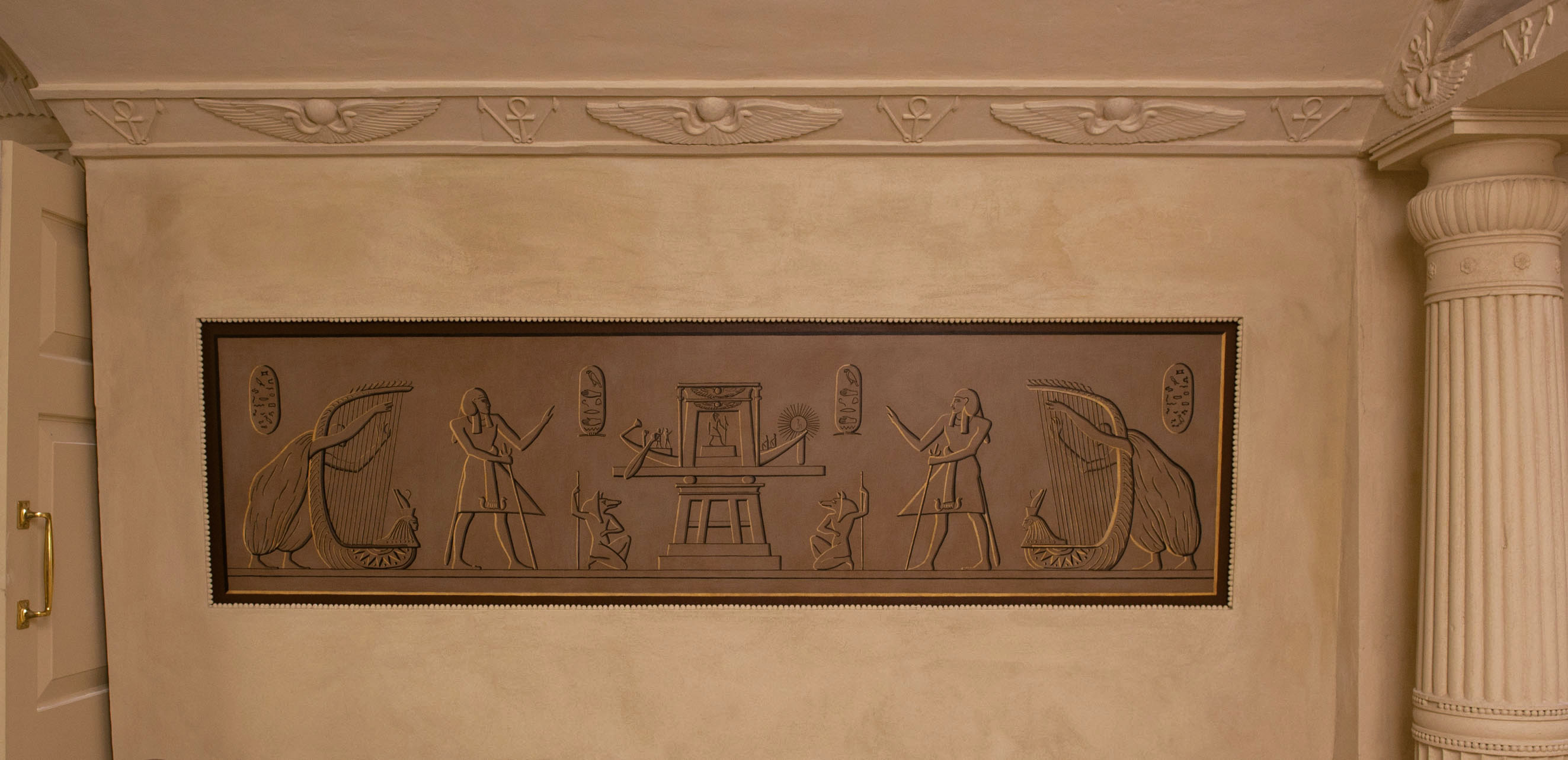
Wall panel
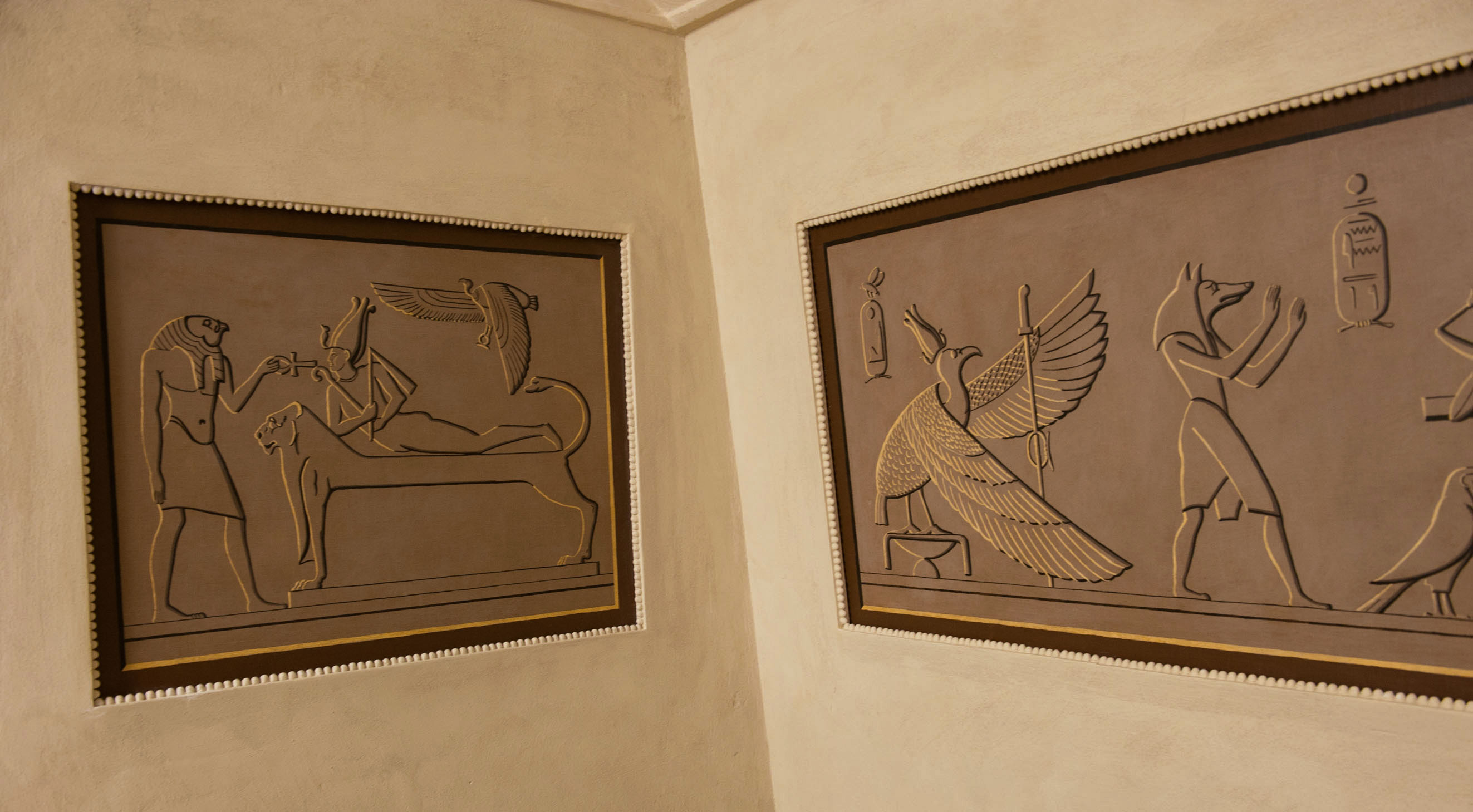
Wall panels
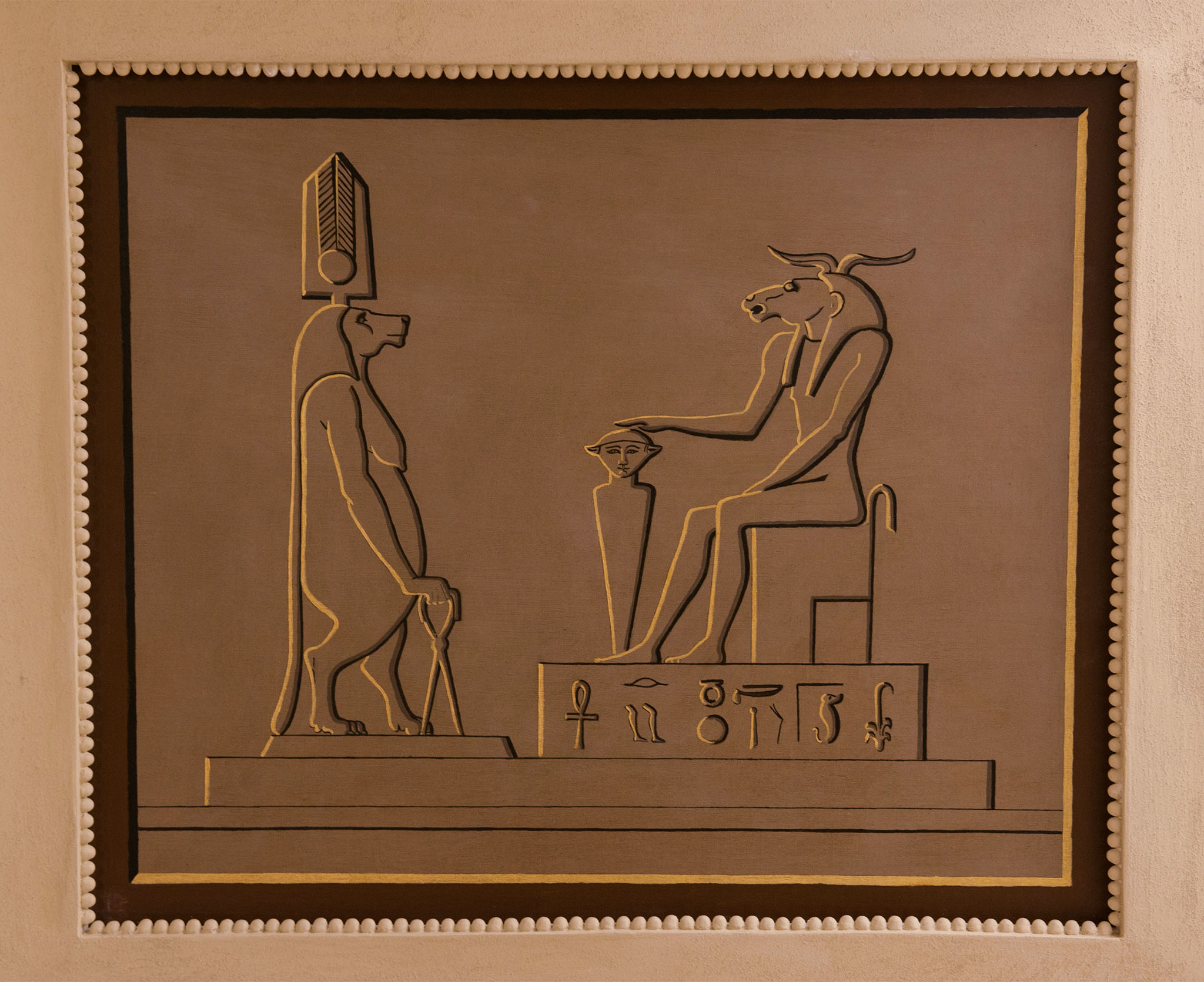
Wall panel
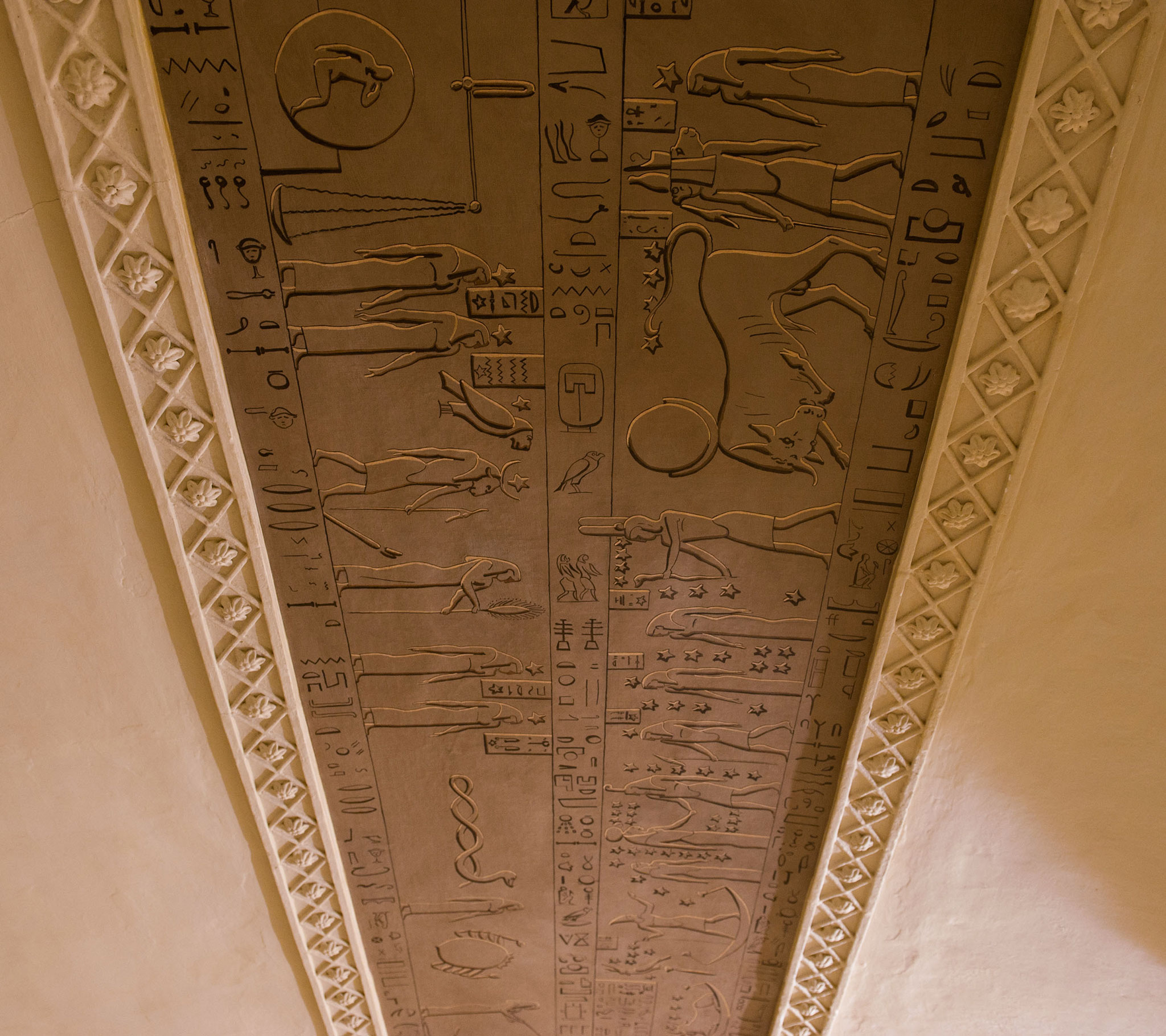
Ceiling canvas

Ceiling canvas showing the view up the stair well into the North Hall with ceiling by William Kent.
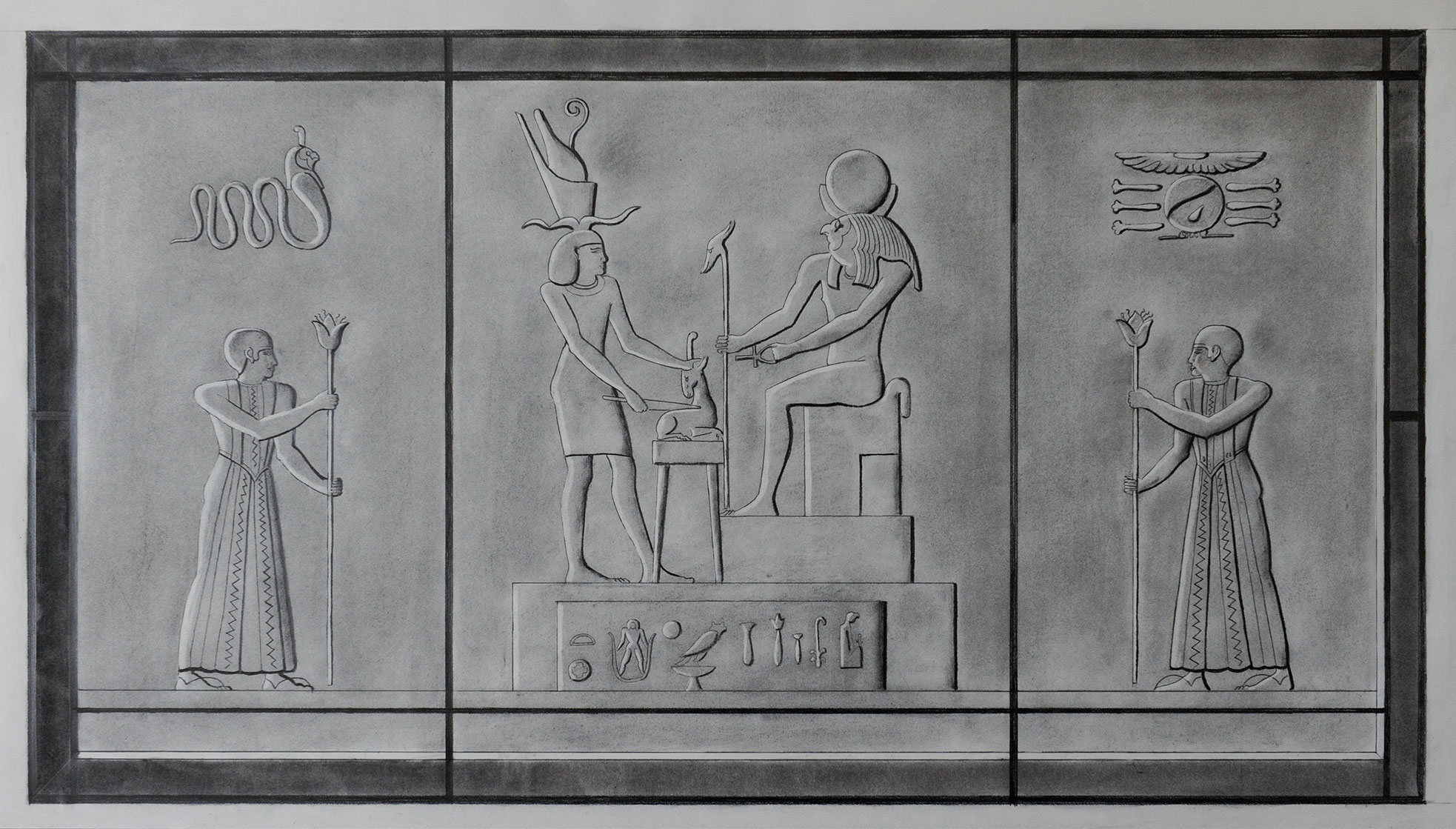
Cartoon for stained glass
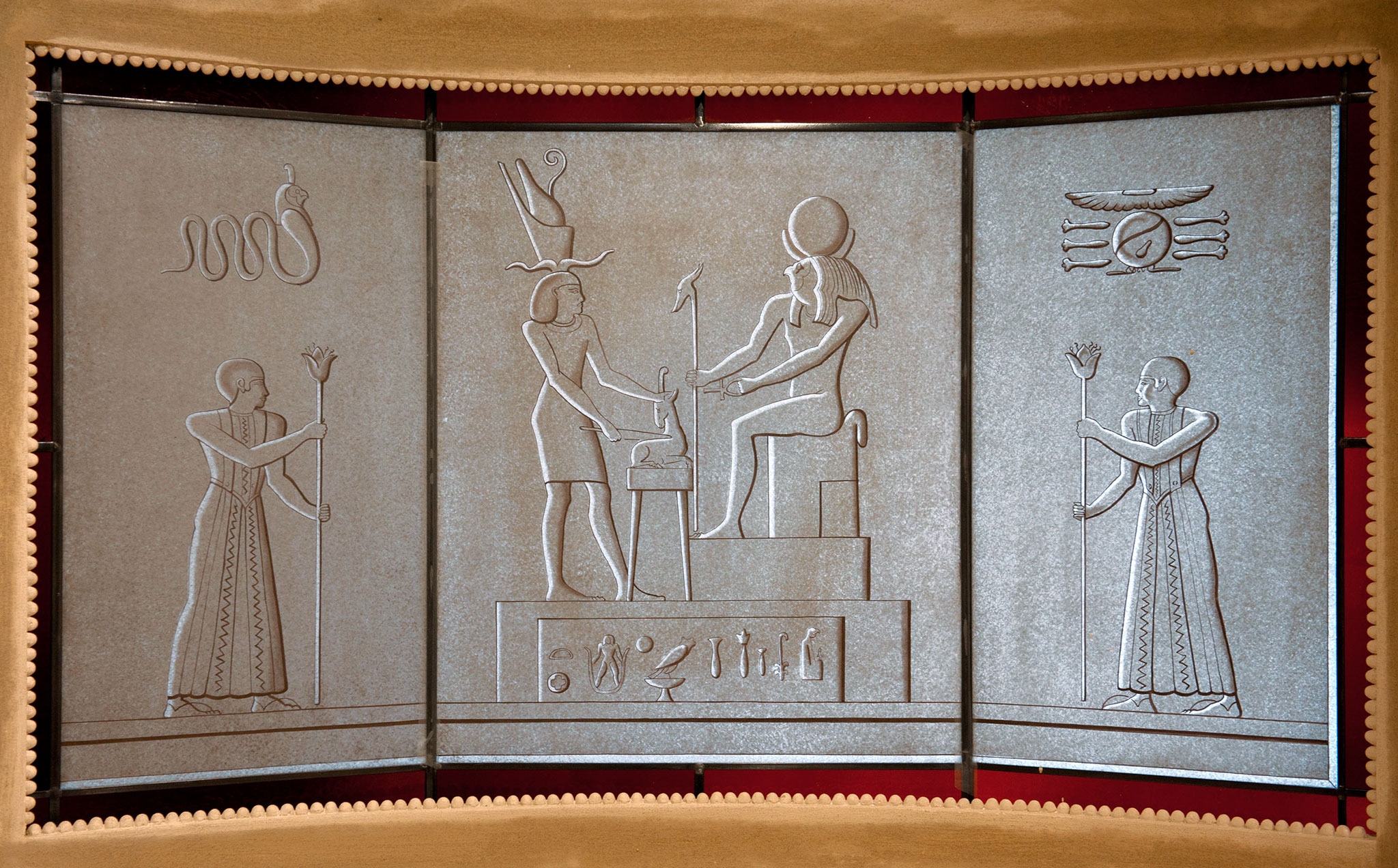
Stained glass panels in the apse
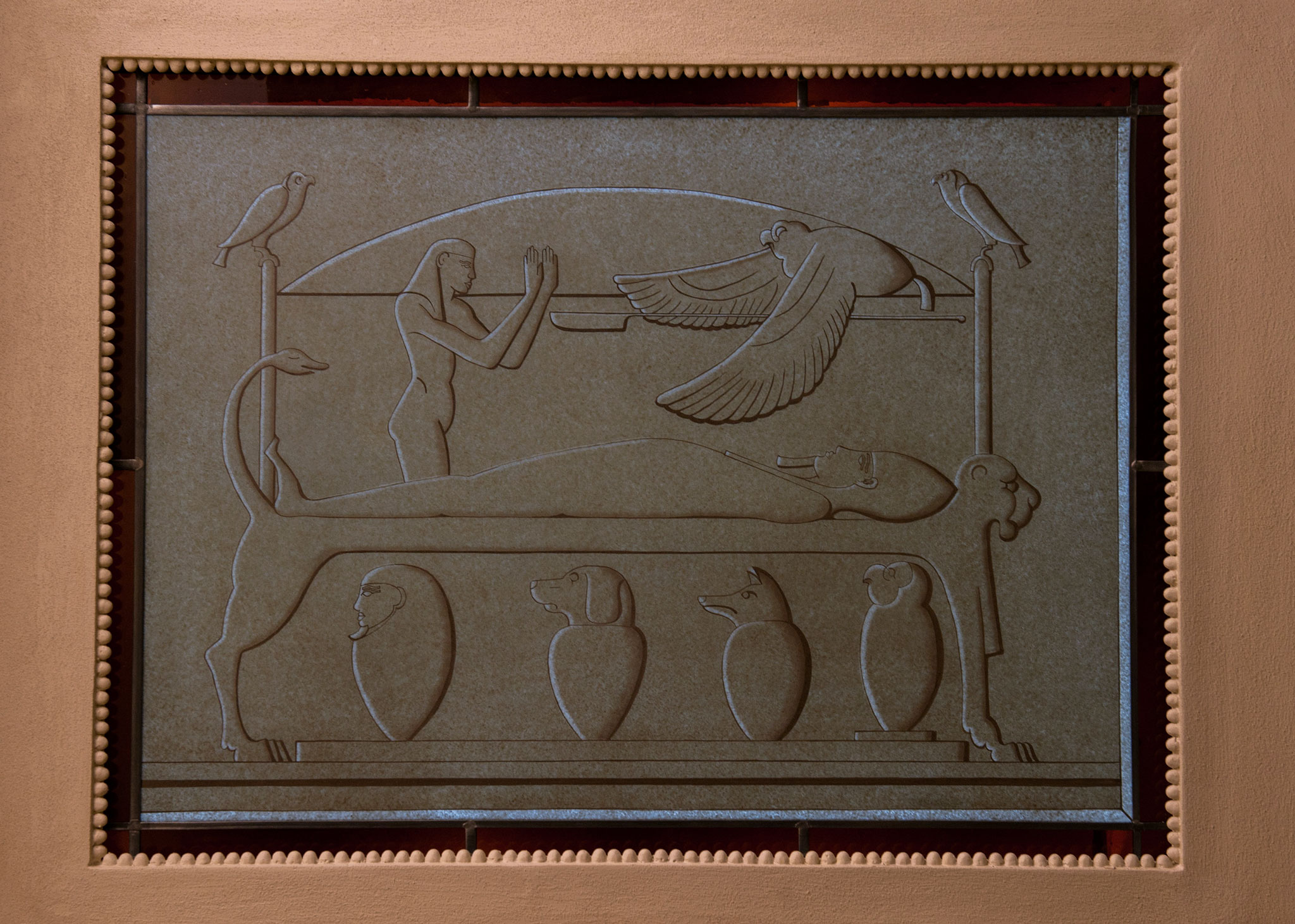
Stained glass panel at the east end